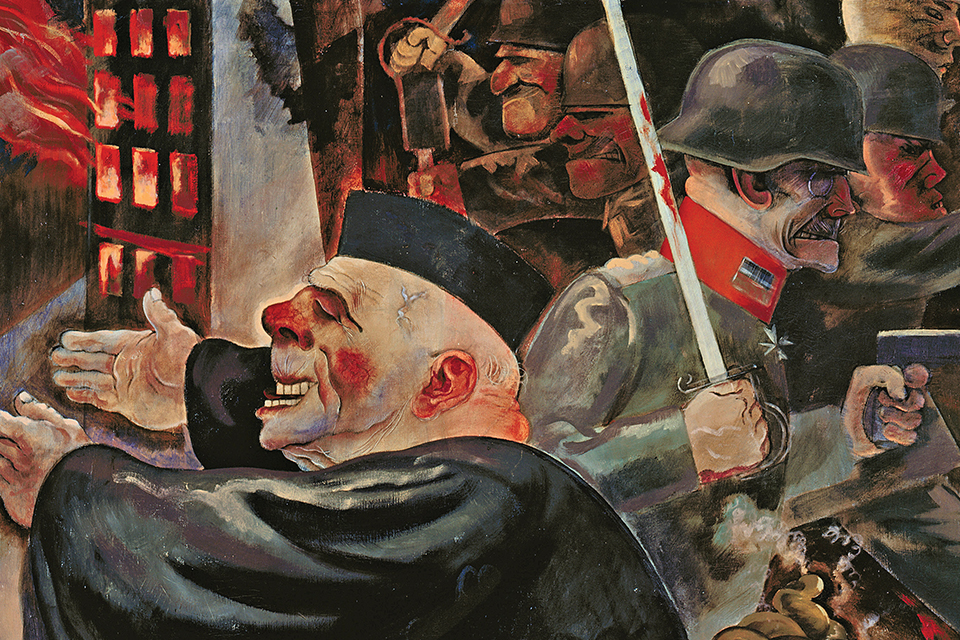As persecuted activists, Grosz and his wife Eva escaped to New York with their two sons as it became evident that the Nazis would win after Hitler was ushered into office in January 1933 and elections were planned for two months later. They sailed separately to avoid suspicion. He put forth a lot of effort to fit in and was successful in picking up both English and the customs of his new nation. However, Grosz still found it difficult to persuade Americans that Hitler's cultural purge was a clear prelude to the suppression of civil rights—first for women, then for minorities, then for the press, and last for all Germans.
Grosz predicted that powerful countries would try to restrain Hitler, starting a Second World War in his 1934 work "Peace." Three vehicles racing along a road while flying the flags of Imperial Japan, Italy, and the Second Spanish Republic are seen in the arresting black-and-white artwork. An automobile with a Swastika brazed on it is encouraging them.
Two years before the Spanish Civil War, three years before the Second Sino-Japanese War, and five years before World War II, Grosz completed the piece. The work was disregarded by American cultural critics because they thought it was too absurd to be prophetic.
It was already too late when Americans recognized Grosz was correct.
In 1959, Grosz and his wife Eva returned to Germany after a long absence. Grosz was searching for emotional closure after displaying glaring indications of trauma for years, while Eva had been homesick all the time. However, Grosz's return to Berlin was challenging since there were fewer mental health facilities available there than in the United States, the art scene was in ruins, many of his friends had passed away, and political unrest in Germany persisted due to the impending Cold War. The artist later died unexpectedly on July 6, 1959, after slipping on the stairs of his flat after a night out with friends. His futile attempt to warn the world away from totalitarianism perished with him.
Why then is Grosz's inspirational tale relatively poorly known?
There are two key reasons in Germany. For the majority of Germans, applauding Grosz's risks also means admitting that others—possibly their parents, grandparents, or great-grandparents—may have contributed to Hitler's ascent by staying silent while Grosz did not. Second, while Grosz managed to flee with a few research-helpful materials, the Nazis obliterated a large number of books and papers left in Berlin.
On the other hand, Americans have a troubled, long-standing relationship with failure. Millions of people were raised believing the fable that if someone is fighting for what is right, they would undoubtedly triumph and be rewarded for it.
However, it is imperative that we follow Grosz's caution in the present day: the destruction of culture portends the destruction of civil rights. Members of a society must understand that there are circumstances in which jeopardizing our jobs and even our safety may be required in order to safeguard that society's future.
We should all take notice when others take those chances.













